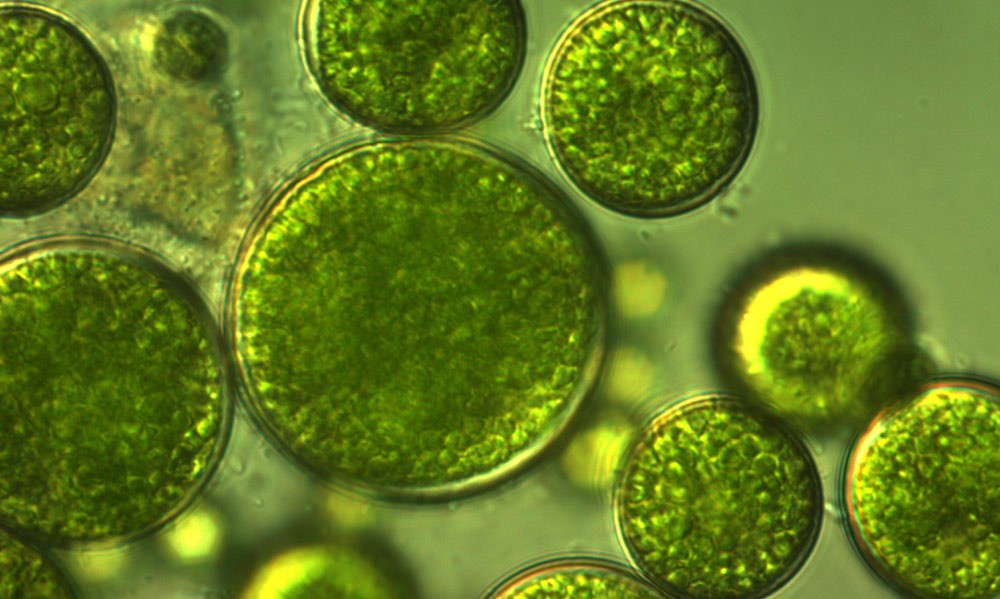How to control algae in a hydroponic crop
Microscopic algae can be a very annoying problem in a hydroponic crop. As photosynthetic organisms they can cover all exposed surfaces that get wet with hydroponic nutrient solution and can cause a wide variety of different issues for the grower. They can also be hard to control, reason why some growers simply choose to ignore them and learn to “live with them” as a fundamental part of their hydroponic setup. In today’s article we’ll talk about some of the reasons why microscopic algae are a problem that has to be dealt with, what the different options to solve the problem are and which of these options can be the most effective.

Besides the unpleasant look of algae covered growing media, these microscopic organisms can cause some important problems in your hydroponic crop. They can deprive hydroponic solutions from some nutrients, generate substances that can hinder plant growth, serve as food for some insects (like fungus gnats) and also serve as food for other microscopic pathogens. For more information about algae and their effects you can read this paper that studied some of the effects of algae in hydroponic crops or this white paper that explains some of the main issues associated with algae in hydroponics. This paper also studies nutritional and pH effects in more depth.
The first barrier of defense against algae is to avoid them, cover surfaces that are exposed to light and nutrient solution with opaque covers and ensure that all surfaces are properly sanitized before hydroponic crops are started. Granted this is a limited solution in scope – as places like the top of media are not easy to cover – but it can provide some protection compared to a crop where no attention is paid to surfaces at all.
To deal with surfaces that have algae in them is an entirely different matter. Algae are not easy to get rid of. This paper goes through multiple potential treatments to get rid of algae, including the use of fungicides, insecticides and algicides and finds that these substances are either not effective, only preventive in nature or actually phytotoxic at the concentration at which they are effective. Hydrogen peroxide is suggested as a potential solution to deal with algae, but hydrogen peroxide also causes significant stress in plant roots and its application is bound to have only limited success, with the algae coming back to recolonize – often more strongly – once the applications are finished. This paper evaluates hydrogen peroxide use even further and also shows some of the potential problems that can happen when using it to control algae and insects.

Thankfully all hope is not lost. Around 20 years ago, experimentation started on the use of some indole derivatives – the same used to stimulate rooting in rooting gel formulations – to control algae populations. This article shows that an application of 3-(3-indolyl)butanoic acid (also known as IBA or Indole-3-butyric acid) at 10 ppm can very effectively control algae populations. The image above shows how the IBA treatment was very effective at reducing all algae growth in the media, even when nutrient solution was directly wetting the media with direct access to light. This is great news since IBA is non-phytotoxic and can therefore be used without having to cause any damage to the plants (unlike peroxide does). There is also additional evidence from independent researchers in Japan showing the effectiveness of IBA for the same purpose (see this article). Additionally there might even be some positive effects of IBA applications in crop yields, as it is shown in this paper where experiments with IBA applications were done on bell pepper. This is not terribly surprising given that the effects of IBA to stimulate root growth are very well known.
Note that although the above articles use IBA as a consistent application during the entire crop, there is little peer reviewed use of IBA applications in plants during their entire crop cycle. To avoid any potentially unknown effects – such as substantial changes in essential oil or product characteristics – it is important to test the effect in the particular plant you are growing and initially apply it only as needed to control any algae growth that might appear. Some areas might also forbid the application of substances like IBA – which is a recognized Plant Growth Regulator (PGR) – so make sure you can also use this in your crop before you even consider it for this application. This 2009 proposal to allow IBA usage in organic food production and handling goes a lot deeper into IBA, its use in plants and its potential effects.